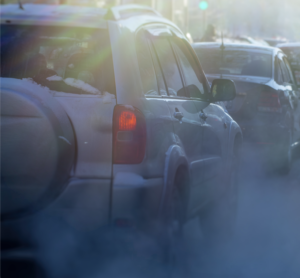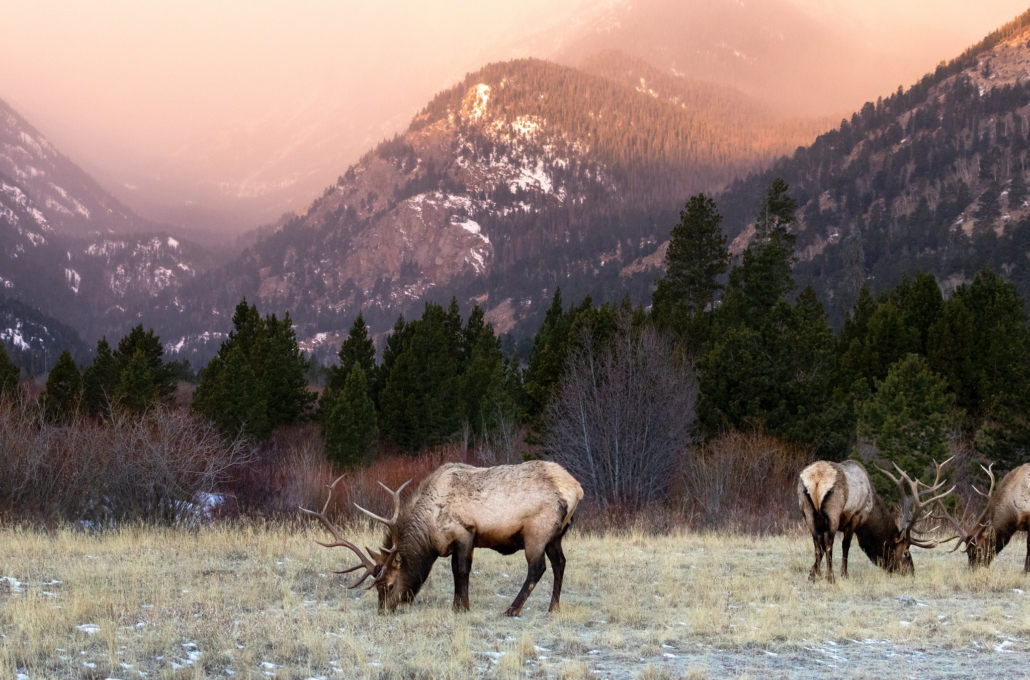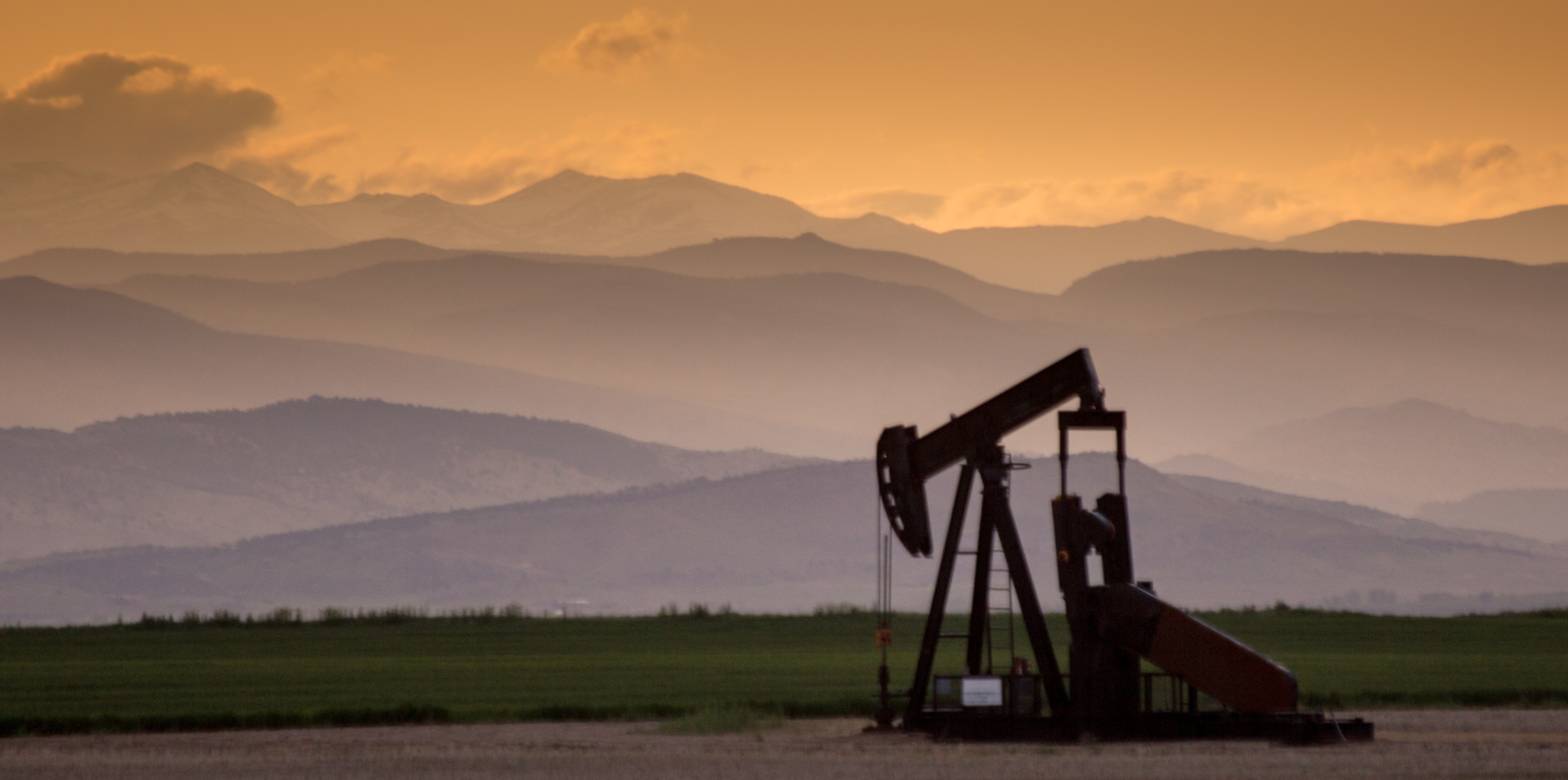It’s no secret: Colorado has an air quality crisis. Especially in the Front Range metro area, air quality often reaches levels so unsafe that the state has to urge people to change habits and stay indoors. A major culprit of our terrible air quality is a health-threatening pollutant called ozone. Earlier this year, the EPA proposed to downgrade Colorado’s Front Range to a “severe” violator of federal ozone standards.
The good news, though, is that we can get this ozone problem under control. Our state’s regulators just need to step up to enforce ozone limits and cut emissions that harm our health.
Here, we answer your questions about Colorado’s worst air quality problem.
What is ozone?
Ground-level ozone is an invisible, odorless gas. It’s one of the most common types of health-threatening air pollution and combines with other pollutants to form “smog.” You won’t see or smell ozone itself, but if you’re outside on a hot, sunny day in Colorado, you’re likely breathing it. Unlike the protective ozone in the stratosphere, ground-level ozone is harmful to human health and the environment.
Where does ozone pollution come from?
Ozone is a “secondary pollutant,” which means it isn’t directly emitted by any source. Rather, it forms when “precursor pollutants” nitrous oxides (NOx) and volatile organic compounds (VOCs) are baked in sunlight and heat. The hot, sunny days of Colorado summers create the ideal conditions for ground-level ozone to form.
Colorado also has a lot of sources of ozone’s “precursor pollutants,” VOCs and NOx. Vehicle traffic, oil and gas drilling, and industrial pollution all emit these pollutants and contribute to the ozone problem. Overall, oil and gas operations are the top contributor to ozone pollution since they emit the most VOCs and the second-most nitrous oxides of any sector in Colorado.
What are the potential health risks?
Inhaling high levels of ozone can cause immediate breathing problems such as coughing, a scratchy throat, and difficulty or pain when breathing. It can cause inflammation in the airways, leave the lungs more susceptible to infection, and aggravate existing respiratory diseases such as asthma.
Research indicates that prolonged, unrelenting exposure to ozone pollution may increase the likelihood of developing asthma and acute respiratory distress syndrome. Studies have also linked high ozone concentrations to premature death.
Who is most affected?
In general, people with asthma, children, older adults and people who are active outdoors (especially outdoor workers) are at higher risk for health impacts from ozone.
Colorado regulators’ chronic failure to ensure clean air hurts Black, Latinx, Indigenous, and other communities on the frontlines of pollution the most. Due to the legacy of racist zoning practices and urban planning, many major sources of pollution, such factories, oil and gas operations, refineries, and highways are located near communities of color such as North Denver, Commerce City, Pueblo, and Greeley. On top of ozone, these communities are also facing other forms of harmful localized pollution like air toxics. The worsening ozone problem they are dealing with today adds to the pollution burden they have been shouldering for decades.
When should I be concerned?
Colorado’s “ozone season” is from June 1 to August 31. The state will issue an Ozone Action Day Alert when ozone levels are forecast to rise to levels that are unhealthy for sensitive groups. Since ozone forms with heat, the air quality is generally worse in the afternoons. To receive Ozone Action Alerts, text “BetterAirCO” to 21000 or sign up for emails here. Or you can visit airnow.gov for real-time information on air quality.
How bad is Colorado’s ozone problem now?
Colorado has consistently failed to curb ozone-causing pollution, which results in more days with unhealthy air. Last summer, the state issued a record-breaking 65 Ozone Action Day Alerts.
This April, the EPA proposed to downgrade the northern Front Range from a “serious” to a “severe” violator of federal ozone standards. This nine-county area stretching from Castle Rock to Fort Collins has been in “nonattainment” for decades, meaning Colorado has repeatedly missed deadlines to bring average ozone levels below federal limits. The downgrade marks the Denver metro area as one of the worst regions for ozone in the country.
This summer, as of July 27, there have been 20 Ozone Action Day Alerts.
Can I escape ozone by going to the mountains?
It depends. Colorado’s mountain air isn’t always as fresh and clean as we might think. The wind often blows smog and ozone from Front Range cities into the mountains, polluting high-altitude ecosystems like Rocky Mountain National Park. Researchers have discovered that ozone damages plants and trees and harms wildlife.
Local ozone pollution exists in the mountains, too. On the American Lung Association’s annual “State of the Air” report, multiple Western slope counties, including popular destinations like Glenwood Springs, Durango, Crested Butte, and Grand Junction, received grades of “C” or below for bad ozone pollution.
Does this have anything to do with climate change?
Climate change causes increasingly hot temperatures and drier weather, which means there are more days when ozone can form and rise to unhealthy levels.
Researchers have found that climate change has already increased ozone levels in the Front Range, which adds up to three extra bad ozone days each year. The effect of climate change on ozone is even greater in neighborhoods with higher percentages of Latinx residents and children living in poverty.
While ozone itself doesn’t cause climate change, reducing the pollution that causes ozone could also help reduce the pollution that causes climate change and bring Colorado closer to meeting its climate targets.
How does wildfire smoke impact ozone?
Smoke that blows into Colorado from fires in the state or across the Western U.S. also brings health-endangering particle pollutants that we can see and smell in the air. Researchers have also found that wildfire smoke ramps up the production of ozone when it mixes with other pollutants.
What is Colorado doing to cut ozone levels?
Laws Conservation Colorado helped pass this year will help reduce vehicle pollution that contributes to ozone, like funding for electric school buses and free transit during August in the Denver metro area and other cities and towns. But we need more action, especially when it comes to oil and gas, the state’s biggest contributor to ozone pollution.
When the EPA finalizes Colorado’s designation as a “severe” ozone violator, hundreds more polluters will be required to apply for permits from the state,primarily oil and gas drilling and collection locations. Gas stations across the northern Front Range will also be required to sell a specially-formulated cleaner gasoline.
The EPA also requires states to draft a State Implementation Plan for bringing down air pollution levels in nonattainment zones like the Northern Front Range. State officials are working on this plan now, and Conservation Colorado will be pushing them to do more on air quality and climate and adopt stronger regulations to hold polluters accountable.
What can I do?
On Ozone Action Days, if you are able, avoid spending too much time outside (especially strenuous exercise) when ozone is highest in the afternoon.
You can also take steps to reduce your own contribution to pollution, especially on days when ozone levels are high. Wait until after 5 p.m. to fuel up your car or mow the lawn. Skip car trips by carpooling, combining trips, or riding public transit (for free during August).
While it’s important to protect your own health and reduce your own pollution, these steps aren’t accessible to all Coloradans — and we can make more progress if we stifle ozone pollution at its biggest source: oil and gas. We’re urging the state to take steps to reduce flaring from oil and gas and the Suncor oil refinery, curtail the most polluting oil and gas activities during ozone season, and more seriously consider the impacts of climate change on ozone levels.
We need your help to hold Colorado regulators and industry accountable. Sign up to become a member of Conservation Colorado today to receive alerts for comment on the new State Implementation Plan. Together we can make our voices heard!











